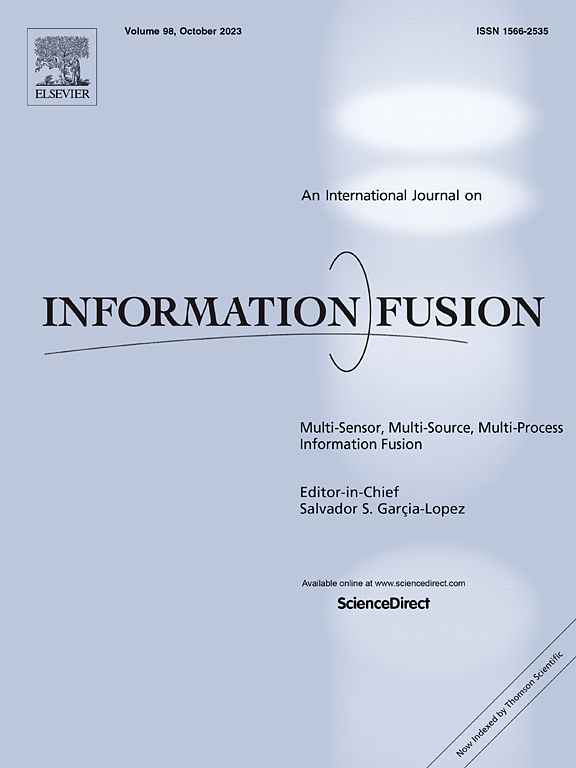Explaining spatio-temporal graph convolutional networks with spatio-temporal constraints perturbation for action recognition
IF 14.7
1区 计算机科学
Q1 COMPUTER SCIENCE, ARTIFICIAL INTELLIGENCE
引用次数: 0
Abstract
Understanding and explaining spatio-temporal graph convolutional networks (STGCNs) for human skeleton action recognition is crucial to improving the security and trustworthiness of action recognition algorithms. However, the complexity of geometric spatio-temporal features in skeleton-based spatio-temporal graphs, the high dependence of geometric features on temporal information, and the dynamics of STGCNs challenge existing graph neural networks (GNNs) explanation methods. It is thorny for these methods to explain the geometric spatio-temporal features intertwined in STGCNs. To this end, we take the human skeleton action recognition based on STGCNs as the research object, and propose a spatio-temporal constraints explanation method for STGCNs (STGExplainer). Firstly, we construct a geometric transition model of human motion in spatio-temporal graphs, which utilizes the Rodrigues’ rotation equation to describe the relationship among nodes in geometric space over time. This model is adopted to geometrically perturb STGCNs. Then, in order to evaluate the importance of geometric spatio-temporal features in STGCNs, we design a geometric perturbation module based on spatio-temporal constraints. The module includes a spatio-temporal constraints-based objective function and an optimization algorithm based on the gradient alternating direction method of multipliers (ADMM), which identifies the geometric spatio-temporal features that are more critical to the model after geometric perturbation of spatio-temporal constraints on STGCNs. The proposed objective function makes the explanation results highly sparse and consistent with the input in terms of geometric consistency of the spatio-temporal structure. Finally, to solve the spatio-temporal importance optimization problem with spatio-temporal constraints, an optimization algorithm based on the gradient ADMM is designed. The algorithm decomposes the optimized spatio-temporal and geometric spatial importance distributions, and then gradually generates more accurate geometric spatio-temporal feature explanations. Experimental results on real datasets show that STGExplainer achieves excellent performance.
解释具有时空约束摄动的时空图卷积网络用于动作识别
理解和解释用于人体骨骼动作识别的时空图卷积网络(STGCNs)对于提高动作识别算法的安全性和可信度至关重要。然而,基于骨架的时空图中几何时空特征的复杂性、几何特征对时间信息的高度依赖性以及STGCNs的动态性对现有的图神经网络(gnn)解释方法提出了挑战。这些方法很难解释交织在STGCNs中的几何时空特征。为此,我们以基于STGCNs的人体骨骼动作识别为研究对象,提出了一种STGCNs的时空约束解释方法(STGExplainer)。首先,构建了时空图中人体运动的几何过渡模型,利用Rodrigues旋转方程描述几何空间中节点间随时间的关系。采用该模型对STGCNs进行几何摄动。然后,为了评估几何时空特征在STGCNs中的重要性,我们设计了一个基于时空约束的几何摄动模块。该模块包括基于时空约束的目标函数和基于梯度交替方向乘法器(ADMM)的优化算法,该算法在STGCNs受到时空约束的几何扰动后,识别出对模型更为关键的几何时空特征。所提出的目标函数使得解释结果在时空结构的几何一致性方面与输入高度稀疏和一致。最后,针对具有时空约束的时空重要性优化问题,设计了一种基于梯度ADMM的优化算法。该算法对优化后的时空和几何空间重要性分布进行分解,逐步生成更精确的几何时空特征解释。在真实数据集上的实验结果表明,STGExplainer实现了优异的性能。
本文章由计算机程序翻译,如有差异,请以英文原文为准。
求助全文
约1分钟内获得全文
求助全文
来源期刊

Information Fusion
工程技术-计算机:理论方法
CiteScore
33.20
自引率
4.30%
发文量
161
审稿时长
7.9 months
期刊介绍:
Information Fusion serves as a central platform for showcasing advancements in multi-sensor, multi-source, multi-process information fusion, fostering collaboration among diverse disciplines driving its progress. It is the leading outlet for sharing research and development in this field, focusing on architectures, algorithms, and applications. Papers dealing with fundamental theoretical analyses as well as those demonstrating their application to real-world problems will be welcome.
 求助内容:
求助内容: 应助结果提醒方式:
应助结果提醒方式:


